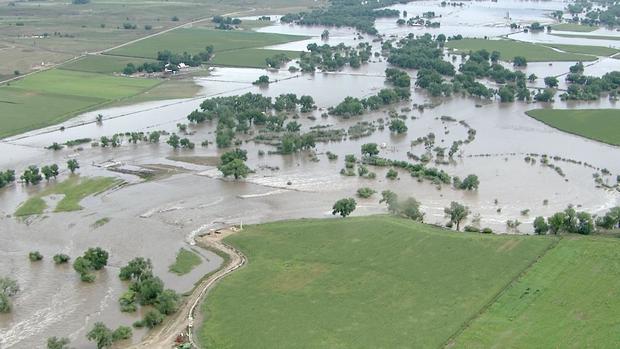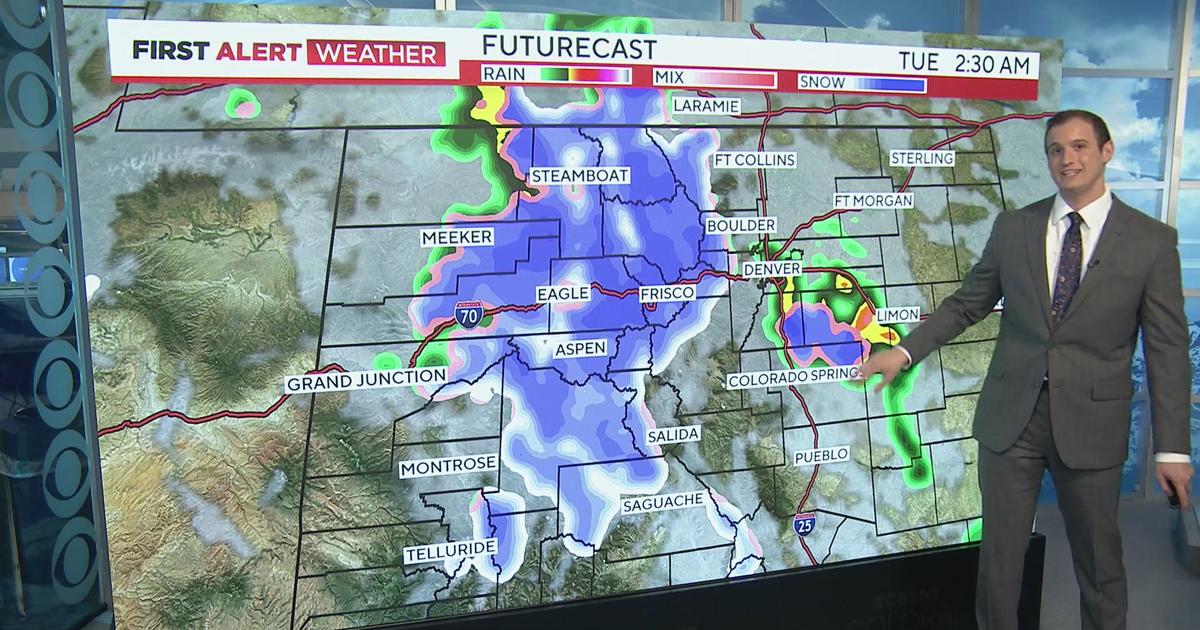Flash Flood Season Is Near, Why Colorado Is So Prone
DENVER (CBS4) - As severe weather awareness week rolls on across Colorado, today's message is about floods and flash floods.
A flash flood is a dangerous, sudden rise of water along a river or creek, in a canyon or over a stretch of land that is normally dry.
They're most often caused by heavy rain, but can also be a result of a dam break or a clog in the flow of water along a stream, such as an ice jam.
Flash floods are also very common in and around burn scars after a wildfire.
River flooding is different from a flash flood because it can be predicted, sometimes up to several days in advance. They are usually caused by heavy rain or rapid snow melt.
In the major flood event of September 2013, we saw both types of flooding in Colorado. It started as a flash flood in the foothills and along Interstate 25, then turned into river flooding as waters traveled across the Front Range and into the South Platte River.
WHY SO PRONE
When it comes to the potential for a flash flood, Colorado has several factors that make the threat high, including the following...
- Wildifres - The numerous burn scars around the state are prone to flash flooding because the fire's intense heat changes the landscape to the point where water no longer infiltrates into the soil. There is also a lack of vegetation to absorb and reduce runoff. The flood threat in and around a burn scar continues for several years after the fire itself.
- Drought - Drought is part of Colorado's climate, and typically, there is some part of the state in some level of drought. After an area has experienced prolonged drought, the ground is extremely hard, and if intense, heavy rain falls, the region is more prone to runoff and flooding than an area not in drought.
- Terrain - The rugged terrain of Colorado with rapid changes in elevation makes the region prone to flash floods. In some instances, thunderstorms can actually become stationary over certain terrain features, creating a deadly scenario. One vivid example of this is the Big Thompson Flash Flood of 1976. A stationary thunderstorm near Estes Park dropped extremely heavy amounts of rain that sent a wall of water down the canyon.
- Mountains - Much like when you wring water out of a wet sponge, mountains interact with the atmosphere when wind are favorable, and the "wet sponge" scenario can play out. If the weather pattern is persistent, it can cause a bad situation to develop quickly, much like what we saw in September of 2013.
PROTECT YOURSELF
Most flood fatalities are caused by flash floods, and nearly half of all deaths are vehicle related. A hidden danger when attempting to cross a flooded road is not knowing if the pavement beneath the water has been washed away.
Most vehicles can be carried by a foot or two of swiftly moving water. The force of water is so powerful that by the time a driver realizes they have made a mistake by attempting to cross a flooded road, it's usually too late.
WATCH VS. WARNING
The National Weather Service will issue flood or flash flood watches and warnings when the threat is present.
A watch means to pay attention to today's forecast because conditions are right to create the danger, and things could rapidly change.
A warning means the danger is present or will occur very shortly, and action to protect your life and property should be taken.





